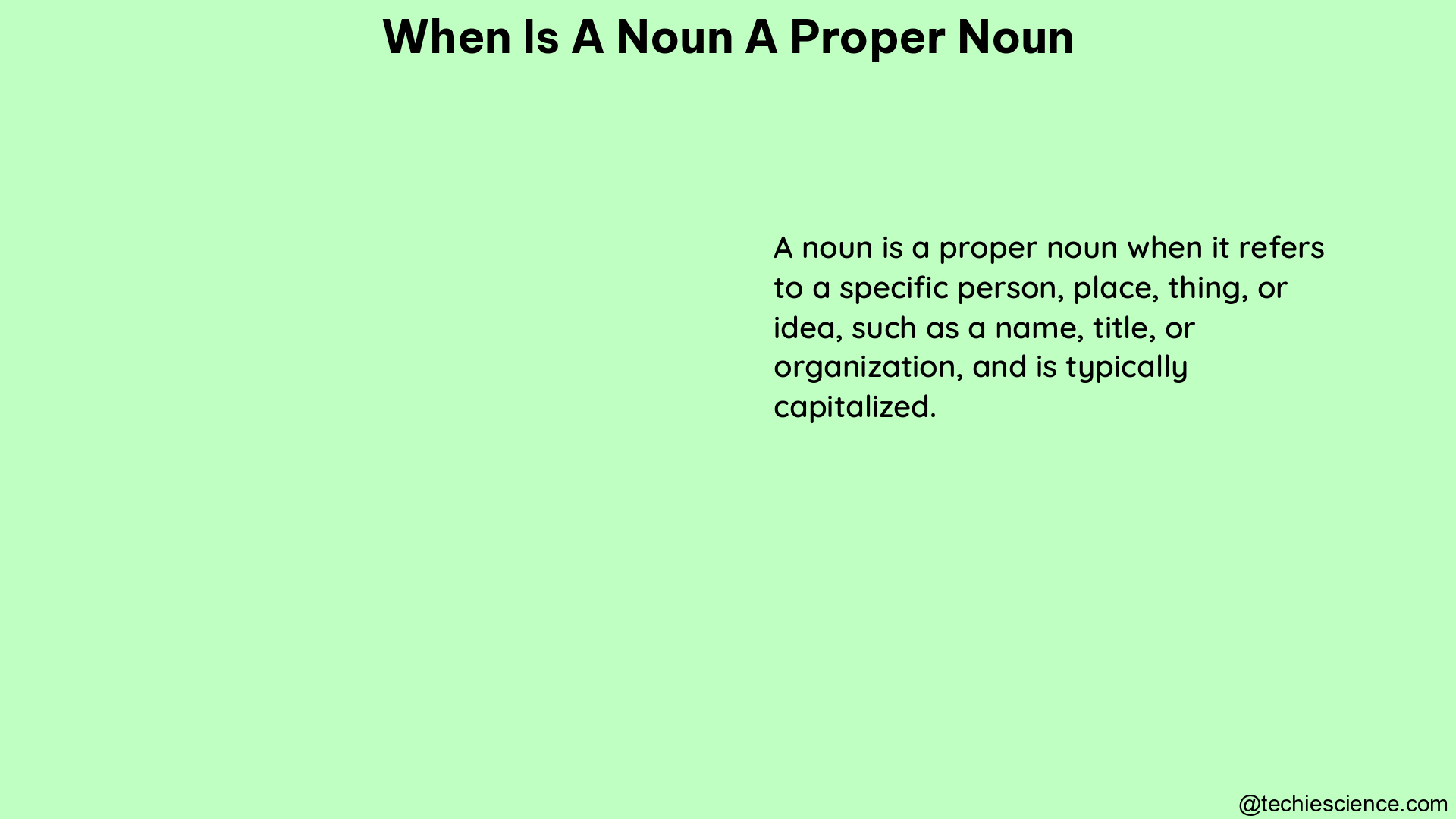A noun is considered a proper noun when it refers to a specific, named entity, such as a person, place, or thing. Proper nouns are always capitalized in English, regardless of their position in a sentence. Understanding the distinction between common and proper nouns is crucial for clear and accurate communication in written and spoken English.
Specificity of Proper Nouns
Proper nouns refer to unique entities, such as:
- Names of People: John, Sarah, Marie Curie, Mickey Mouse
- Names of Places: New York, London, Mount Kilimanjaro
- Names of Organizations: Google, NASA, Walmart
- Names of Specific Events: World War II, Olympics
Capitalization of Proper Nouns

Proper nouns are always capitalized, even when they appear in the middle of a sentence. This distinguishes them from common nouns, which are only capitalized at the beginning of sentences.
Examples of Proper Nouns
Here are some examples of proper nouns:
- Names of people: John, Marie Curie, Mickey Mouse
- Names of places: New York, Paris, Mount Kilimanjaro
- Names of organizations: Google, NASA, Walmart
- Names of specific events: World War II, Olympics
- Names of days and months: Sunday, July
- Titles of creative works: Hamlet, Lord of the Rings
Plural Forms of Proper Nouns
Proper nouns can be plural if they refer to multiple entities with the same name, such as the Oscars or the Hendersons.
Common Nouns vs. Proper Nouns
Common nouns refer to general categories, while proper nouns refer to specific instances within those categories. For example, “city” is a common noun, while “New York City” is a proper noun.
Context and Proper Nouns
The context in which a noun is used can help determine if it is a proper noun. For instance, “mom” is a common noun when used as a general term, but it becomes a proper noun when used as a name, such as “Mom is coming over.”
Grammatical Specification
- Capitalization: Proper nouns are always capitalized.
- Plural Forms: Proper nouns can be plural if they refer to multiple entities with the same name.
- Context: The context in which a noun is used can help determine if it is a proper noun.
Theoretical Explanation
Proper nouns are a distinct category of nouns that serve to identify specific entities. They are always capitalized to differentiate them from common nouns, which refer to general categories. The distinction between common and proper nouns is crucial for clear and accurate communication in written and spoken English.
Advanced Details
- Proper Names vs. Proper Nouns: Some linguists make a distinction between proper names (single-word names) and proper nouns (which can include phrases). However, this distinction is not universally observed.
- Common Nouns in Proper Names: Common nouns can be part of proper names, such as “the United Kingdom” or “North Carolina.”
Examples
- “I am from a city” (common noun)
- “I am from Chicago” (proper noun)
- “I saw a movie” (common noun)
- “I saw the Lord of the Rings” (proper noun)
Reference Links
- Khan Academy – Common and Proper Nouns (video) – https://www.khanacademy.org/humanities/grammar/parts-of-speech-the-noun/types-of-nouns/v/common-and-proper-nouns
- Thesaurus – What Are Proper Nouns And How Do You Use Them? – https://www.thesaurus.com/e/grammar/proper-nouns/
- Merriam-Webster – Common and Proper Nouns: What’s the difference? – https://www.merriam-webster.com/grammar/common-and-proper-nouns-whats-the-difference

Hi…..I’m a graduate with a Bachelor’s degree in English Literature. I wish to do a Masters in the same field someday and continue my career in Academia.
Let’s connect through LinkedIn: